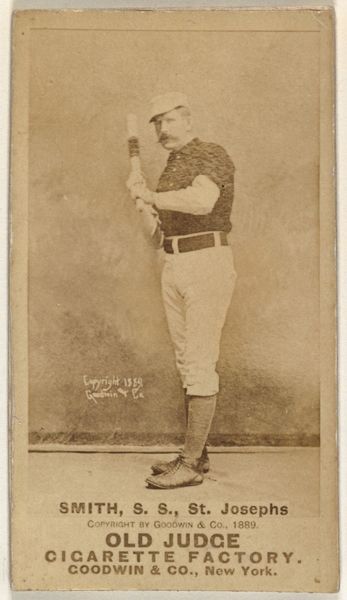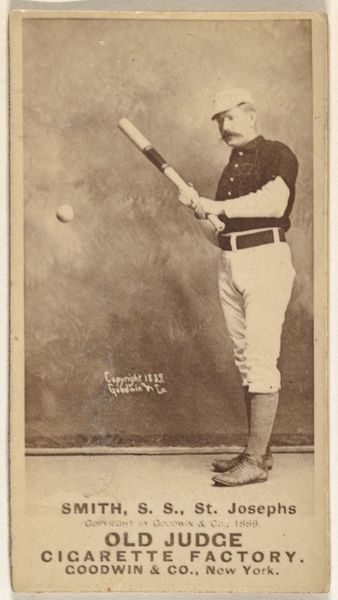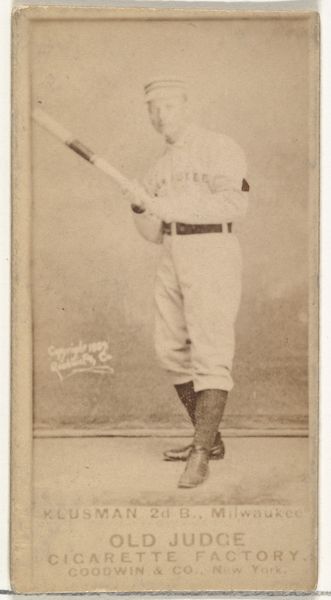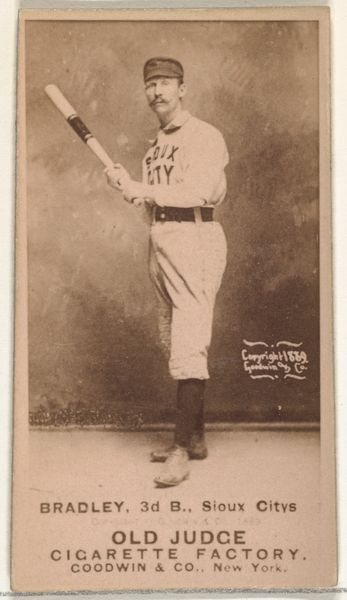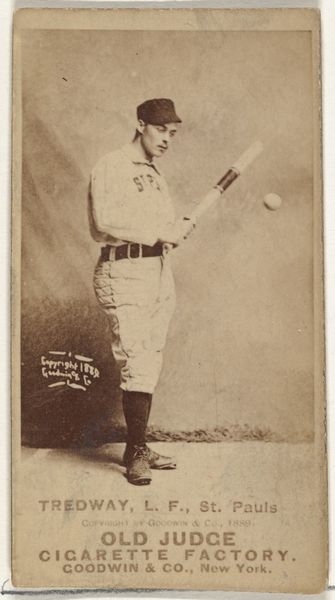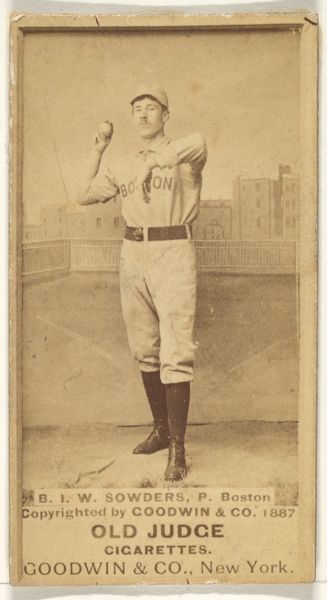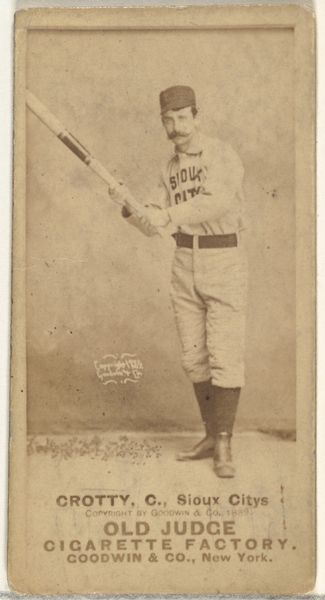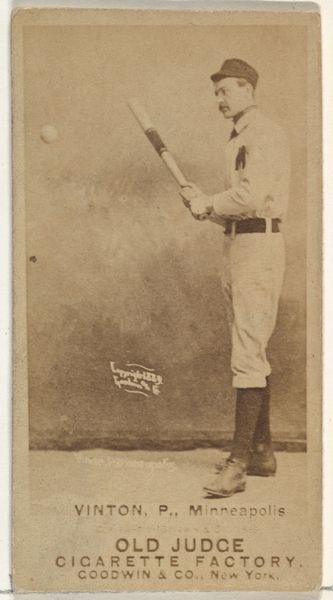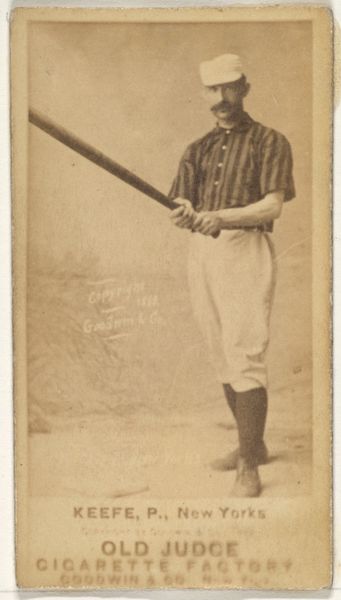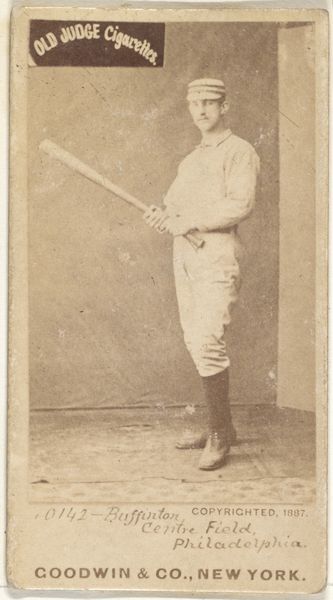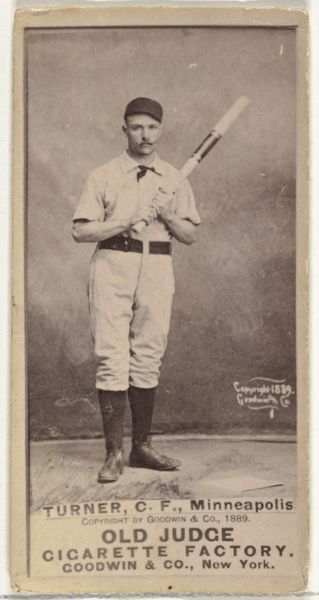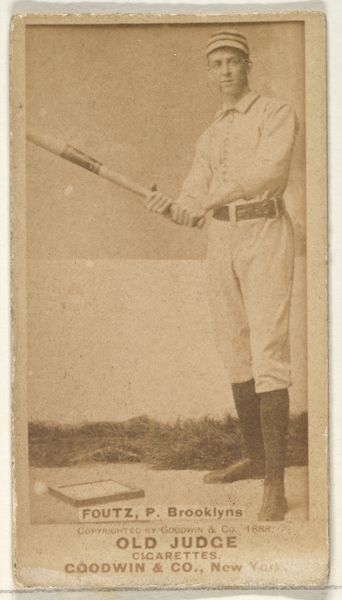
H. Smith, Shortstop, St. Joseph Clay Eaters, from the Old Judge series (N172) for Old Judge Cigarettes 1889
0:00
0:00
Dimensions: sheet: 2 11/16 x 1 3/8 in. (6.9 x 3.5 cm)
Copyright: Public Domain
Editor: Here we have "H. Smith, Shortstop, St. Joseph Clay Eaters," a baseball card from 1889, part of the "Old Judge" series. It appears to be a photograph or print, maybe even a drawing reproduced for mass consumption. What strikes me is the rigid pose of the player – very different from the action shots we see today. How do you interpret this work within its historical context? Curator: This seemingly simple baseball card actually reveals a complex interplay between sport, commerce, and identity formation in late 19th-century America. Think about it: why use a baseball player to advertise cigarettes? The association links virility, athleticism, and idealized masculinity to tobacco consumption. Editor: That’s a good point! I hadn't thought of the link that way. So the image is not just about baseball… Curator: Precisely. And consider H. Smith himself. As a player for the "St. Joseph Clay Eaters," he embodies a specific regional identity. Baseball was rapidly becoming a national pastime, fostering a sense of community and belonging, but also highlighting regional rivalries and, significantly, social stratification. These cards helped build celebrity for players but also enforced ideals of who got to be famous, seen, and celebrated. Who was excluded from the mainstream narrative? Editor: It's fascinating to consider who these cards were marketed to and what that reveals about the social landscape of the time. Were they primarily for men, and what does that tell us about gender roles? Curator: Exactly! This wasn't just about baseball; it was about constructing and reinforcing social norms. The “Old Judge” series presents an opportunity to deconstruct these norms and ask critical questions about representation and power in popular culture. What’s your sense of how the photographic style plays into this? Editor: It's almost like a formal studio portrait, which adds a sense of legitimacy and perhaps elevates the status of the baseball player. Curator: Precisely! This image speaks volumes about the intersection of sport, commerce, and the construction of identity. These cards aren’t merely collectible ephemera; they are cultural artifacts laden with social meaning. Editor: This has given me a lot to think about, especially the layers of meaning behind such a small, everyday object. I never expected to find such depth!
Comments
No comments
Be the first to comment and join the conversation on the ultimate creative platform.
